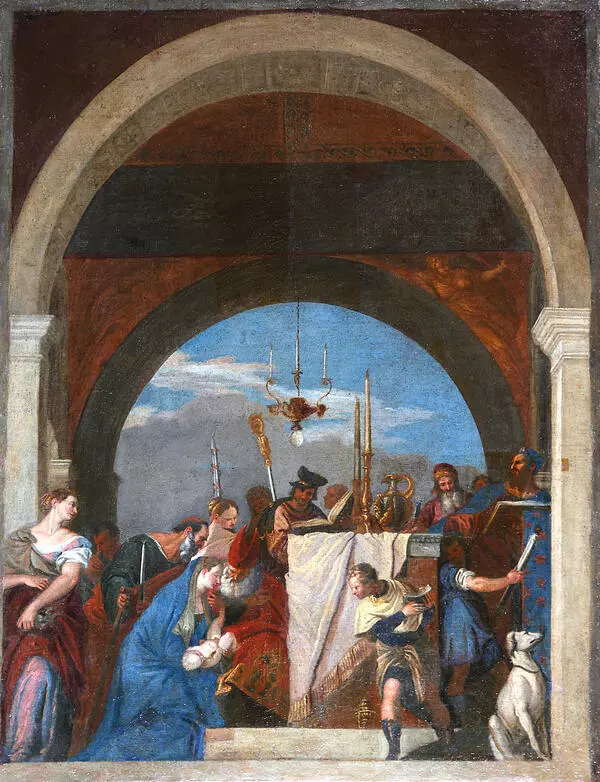Paolo Veronese, a representative of the Venetian school, is one the most renowned Italian painters of the 16th century. Born in Verona, he was the fifth son in the family of Gabriele Caliari, a sculptor. He took lessons from his uncle, a Venetian painter, worked in Verona and from 1555 also in Venice and other Italian towns. The master worked on monumental decoration, frescoes and paintings on religious, mythological and allegorical themes, as well as portraits.
The original painting The Family of Darius before Alexander the Great, dated around 1565 to the 1570s, is in the National Gallery, London. There is a legend related to its creation, which was retold in Letters of a Russian Traveller by Nikolay Karamzin. According to the legend, Paolo Veronese once got caught in a storm in the neighbourhood of Venice and had to seek refuge in the country house of Procurator Pisani, where he received a friendly welcome and stayed for a few days. While he was there, he allegedly did this painting and hid it under the bed; when he was leaving, he told the host that he had left him something as a token of his gratitude for the food. It is hardly realistic that a painting sized 236×475cm could have been put even under the biggest bed possible, and besides with the paint still wet.
The painting depicts a historical episode related by Plutarch. The subject was popular with painters of that time. Persian King Darius was defeated at the Battle of Issus, but he survived. He fled leaving his family at the mercy of the victor. When Alexander the Great, who was about to have lunch, was told about the captured mother, wife and two unmarried daughters of Darius, who thought that Darius was dead, Alexander ordered his men to tell the women that Darius was alive and they should not be afraid of him as his war was only against Darius.
Veronese treated this story more like a theatrical scene. It is not entirely clear which of the figures is Alexander. It is believed that he is the man in front of kneeling Sisygambis, Darius’ mother, but Plutarch’s narrative suggests otherwise. The painting exhibited in Kaluga replicates fully – without any alterations – the composition of the canvas in London. It is not typical of a sketch, which usually reflects an artistic endeavour. It is not improbable that it is a copy intended for a relatively small room.
The original painting The Family of Darius before Alexander the Great, dated around 1565 to the 1570s, is in the National Gallery, London. There is a legend related to its creation, which was retold in Letters of a Russian Traveller by Nikolay Karamzin. According to the legend, Paolo Veronese once got caught in a storm in the neighbourhood of Venice and had to seek refuge in the country house of Procurator Pisani, where he received a friendly welcome and stayed for a few days. While he was there, he allegedly did this painting and hid it under the bed; when he was leaving, he told the host that he had left him something as a token of his gratitude for the food. It is hardly realistic that a painting sized 236×475cm could have been put even under the biggest bed possible, and besides with the paint still wet.
The painting depicts a historical episode related by Plutarch. The subject was popular with painters of that time. Persian King Darius was defeated at the Battle of Issus, but he survived. He fled leaving his family at the mercy of the victor. When Alexander the Great, who was about to have lunch, was told about the captured mother, wife and two unmarried daughters of Darius, who thought that Darius was dead, Alexander ordered his men to tell the women that Darius was alive and they should not be afraid of him as his war was only against Darius.
Veronese treated this story more like a theatrical scene. It is not entirely clear which of the figures is Alexander. It is believed that he is the man in front of kneeling Sisygambis, Darius’ mother, but Plutarch’s narrative suggests otherwise. The painting exhibited in Kaluga replicates fully – without any alterations – the composition of the canvas in London. It is not typical of a sketch, which usually reflects an artistic endeavour. It is not improbable that it is a copy intended for a relatively small room.





